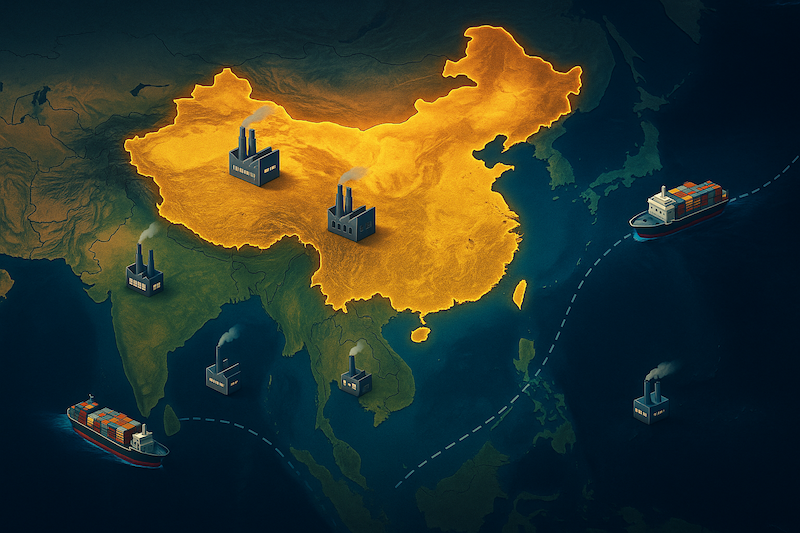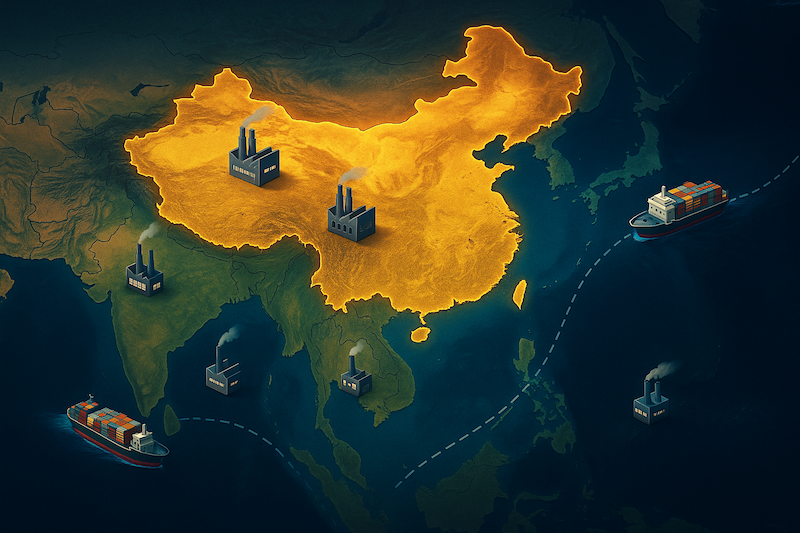Close competition: China’s manufacturing downturn redraws Asia’s industrial map
Neutral
7.7

China’s manufacturing sector has slipped into a deeper-than-expected contraction, prompting a re-examination of where global production capacity is heading. For investors, the rotation is already visible: capital that once flowed almost exclusively to mainland processing hubs is increasingly finding its way into Southeast Asia and India, as geopolitical tension and trade barriers reshape supply chains. […]
Pulse AI Analysis
China's manufacturing downturn has significant ripple effects across Asia, shifting production landscapes and impacting investor focus. The country's declining PMI, due to both internal economic pressures and high U.S. tariffs, has pushed manufacturers to relocate from China to neighboring nations like Vietnam, Thailand, Malaysia, and Indonesia. Southeast Asia is gaining attention as an emerging hub for industries ranging from automotive to electronics, benefiting from lower tariff rates and geographic proximity to Chinese supply chains. Conversely, India, despite its potential, is experiencing a slower transition due to high tariffs and ongoing reforms.
The shift is not just about location but also involves advanced manufacturing technologies and sectors like robotics, which are following factories to their new homes in Southeast Asia. This migration is enhancing local industries' capabilities and creating new investment opportunities in automation technology across the region. Despite some U.S. efforts to reshore manufacturing, significant production and investment continue to flow to Asia due to competitive costs and established supply chains.
Key Market Implications:
- Growth in industrial real estate and logistics sectors in Southeast Asia, particularly Vietnam and Thailand.
- Increased investments in high-tech manufacturing capacities in Malaysia.
- Expansion of robotics and automation industries across Southeast Asia, supporting advanced manufacturing.
- Strategic positioning of Indonesia in the global supply chain for battery materials.
- Considerations for long-term investments in India, given its gradual market reforms and significant potential.
The shift is not just about location but also involves advanced manufacturing technologies and sectors like robotics, which are following factories to their new homes in Southeast Asia. This migration is enhancing local industries' capabilities and creating new investment opportunities in automation technology across the region. Despite some U.S. efforts to reshore manufacturing, significant production and investment continue to flow to Asia due to competitive costs and established supply chains.
Key Market Implications:
- Growth in industrial real estate and logistics sectors in Southeast Asia, particularly Vietnam and Thailand.
- Increased investments in high-tech manufacturing capacities in Malaysia.
- Expansion of robotics and automation industries across Southeast Asia, supporting advanced manufacturing.
- Strategic positioning of Indonesia in the global supply chain for battery materials.
- Considerations for long-term investments in India, given its gradual market reforms and significant potential.
This analysis was generated using Pulse AI, Glideslope's proprietary AI engine designed to interpret market sentiment and economic signals. Results are for informational purposes only and do not constitute financial advice.






